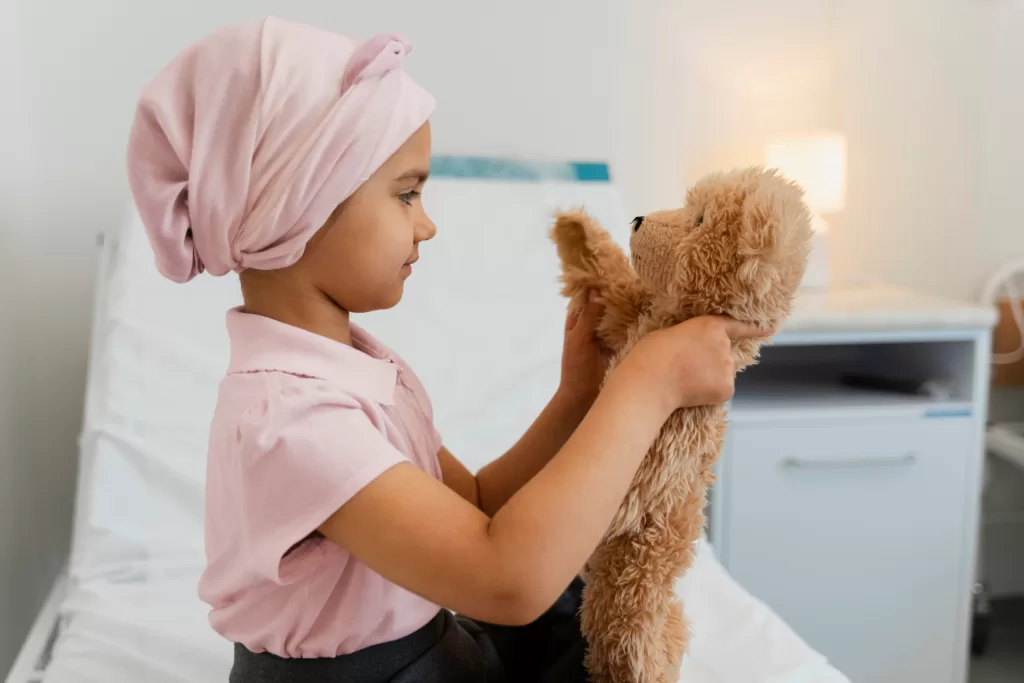Affinity Health, a leading provider of high-quality health coverage, explores childhood cancer, its types, signs, and what to expect if your child is diagnosed.
“September marks Childhood Cancer Awareness Month, a time to recognise the challenges young cancer patients and their families face,” says Murray Hewlett, CEO of Affinity Health.
“While childhood cancer is relatively rare, it is the third leading cause of death by disease among children aged five to 14, according to the National Institutes of Health. As a parent, understanding childhood cancer can be crucial in early detection and support.”
What is Childhood Cancer?
Childhood cancer refers to cancers that occur in children and adolescents, typically under the age of 20. Unlike many adult cancers, childhood cancers are not strongly linked to lifestyle or environmental factors. Instead, they often result from cell DNA changes that occur very early in life, sometimes before birth.
Types of Childhood Cancer
There are many types of childhood cancers, but the most common include:
Leukaemia: This is the most common childhood cancer, accounting for about 28% of all cases. It affects the blood and bone marrow.
Brain and Central Nervous System Tumours: These make up about 26% of childhood cancers and can affect a child’s cognitive and physical abilities.
Neuroblastoma: This cancer develops from immature nerve cells and accounts for about 6% of childhood cancers.
Wilms Tumour: Also known as nephroblastoma, this kidney cancer is most common in children under five years old.
Lymphoma: Including Hodgkin and non-Hodgkin lymphoma, these cancers affect the lymphatic system.
Rhabdomyosarcoma: This is the most common type of soft tissue sarcoma in children, often appearing in the head, neck, or urinary and reproductive organs.
Retinoblastoma: A rare eye cancer that primarily affects young children.
Signs and Symptoms to Watch For
Symptoms of cancer can be subtle and easily confused with common childhood illnesses. However, persistent symptoms should always be checked by a healthcare provider. Red flags to watch for include:
- Unexplained weight loss.
- Persistent fatigue or paleness.
- Easy bruising or bleeding.
- Frequent infections.
- Unexplained fever.
- Bone or joint pain, especially if it wakes the child at night.
- Unusual lumps or swelling.
- Headaches, often with early morning vomiting.
- Sudden vision changes.
- Persistent nausea or vomiting without a known cause.
Remember, having one or more of these symptoms doesn’t necessarily mean your child has cancer. If you’re concerned, it’s always best to consult your child’s paediatrician.
Diagnosis and Treatment
If childhood cancer is suspected, your child’s doctor will likely order a series of tests, which may include blood tests, imaging studies (like X-rays, CT scans, or MRIs), and possibly a biopsy. Treatment for childhood cancer has come a long way in recent decades. The most common treatments are:
- Chemotherapy: Using drugs to kill cancer cells.
- Radiation therapy: Using high-energy rays to kill cancer cells.
- Surgery: To remove tumours.
- Immunotherapy: Helping the body’s immune system fight cancer.
- Stem cell transplant: For some types of leukaemia and other cancers.
The treatment plan will depend on the type of cancer, its stage, and other factors. Sometimes, a combination of treatments is used.
Coping with a Childhood Cancer Diagnosis
Hearing your child has cancer can be terrifying. Here are six strategies that may help:
- Learn about the specific type of cancer: Knowledge can help you feel more in control and better equipped to make decisions.
- Seek support: Consider joining support groups for parents of children with cancer.
- Take care of yourself: Remember to stay healthy to care for your child. Eat well, get enough sleep, and don’t hesitate to ask for help.
- Be open with your child: Provide age-appropriate information about their condition and treatment. Children often sense something wrong, and honesty can help build trust.
- Maintain routines where possible: This can help provide a sense of normalcy for your child and family.
- Work closely with your healthcare team: Don’t hesitate to ask questions or voice concerns.

Conclusion
While a childhood cancer diagnosis is every parent’s nightmare, understanding the disease can help you recognise potential signs early and navigate the journey if your family is affected. Remember, great strides have been made in treating childhood cancers, and research continues to improve outcomes. By working together, we can help ensure that more children not only survive cancer but thrive in its aftermath.


























